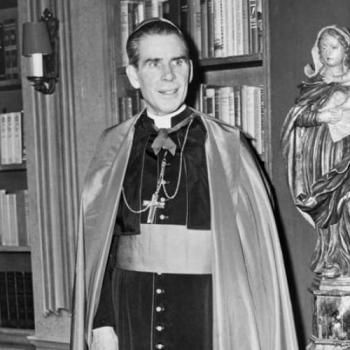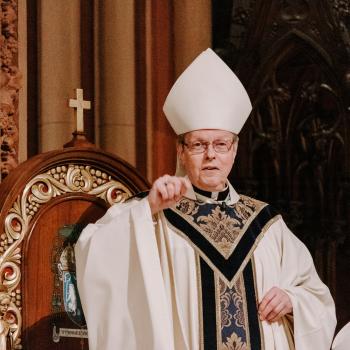Given the dwindling vocations, this shouldn’t be a shock. But it’s sad news nonetheless:
When Sister Mary Jean Ryan entered the convent as a young nurse in 1960, virtually every department of every Catholic hospital was run by a nun, from pediatrics to dietary to billing. After her retirement on July 31 as the chief executive of one of the country’s largest networks of Catholic hospitals, only 11 nuns remained among her company’s more than 22,000 employees, and none were administrators.
For SSM Health Care, a $4.2 billion enterprise that evolved from the work of five German nuns who arrived here in 1872, Sister Mary Jean’s departure after 25 years as the company’s first chief executive marks a poignant passing. The gradual transition from religious to lay leadership, which has been changing the face of Catholic health care for decades, is now nearly complete.
In 1968, nuns or priests served as chief executives of 770 of the country’s 796 Catholic hospitals, according to the Catholic Health Association. Today, they preside over 8 of 636 hospitals. With Sister Mary Jean’s departure, only 8 of 59 Catholic health care systems are directed by religious executives.
SSM, which is now led by William P. Thompson, a Catholic layman and longtime company executive, had been the largest Catholic health system still managed by a nun. Formed in 1986, the St. Louis firm consolidated the management of 15 Catholic hospitals and two nursing homes in Missouri, Illinois, Oklahoma and Wisconsin.
As with other healing orders that have ceded control, the Franciscan Sisters of Mary prepared for their inevitable detachment from SSM with more planning than sentiment.
“We can’t be maudlin about this,” said Sister Mary Jean, 73, who still presides over the company’s board. “I mean, yes, we are a dying breed. We are disappearing from the face of the earth and all of that. That being said, perhaps this is a moment for people to acknowledge the contribution that has been made by women religious throughout our history in the United States.”
The leadership shift has stirred angst in many Catholic hospitals about whether the values imparted by the nuns, concerning the treatment of both patients and employees, can withstand bottom-line forces without their day-to-day vigilance. Although their influence is often described as intangible, the nuns kept their hospitals focused on serving the needy and brought a spiritual reassurance that healing would prevail over profit, authorities on Catholic health care say.
In the case of SSM, that has meant turning away business arrangements with doctors who decline to accept Medicaid. It has meant discounting treatment for the poor and offering charity care to the uninsured, just as the order’s founders did. The St. Louis nuns’ earliest ledgers denoted patients unable to pay as “Our dear Lord’s.”
The near extinction of nuns from American hospitals stems largely from the drastic decline of religious orders that accompanied the women’s movement, the sexual revolution, ethnic assimilation and the Second Vatican Council’s opening of the church to lay leadership.
And for another view of nursing sisters, check out this item and related stories at ONE-TO-ONE.












